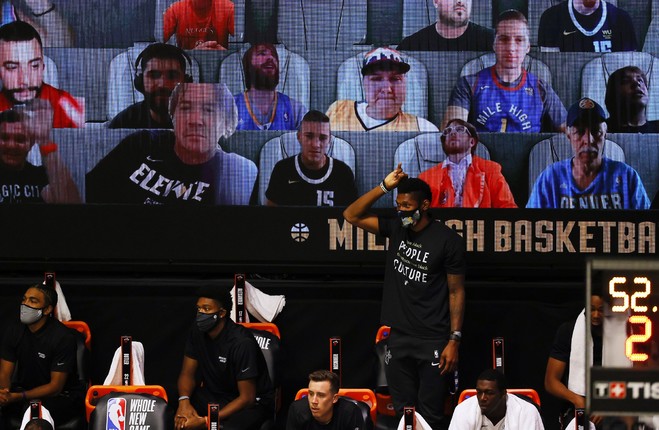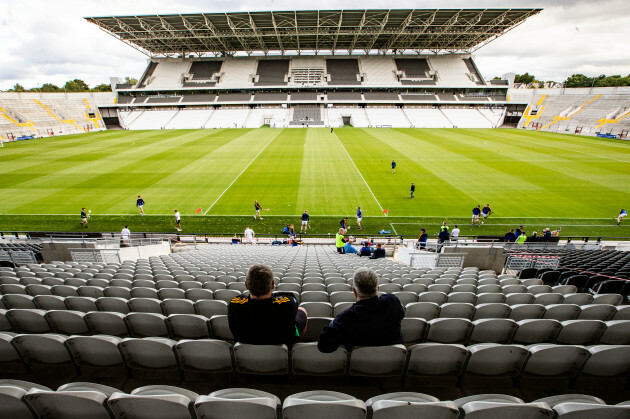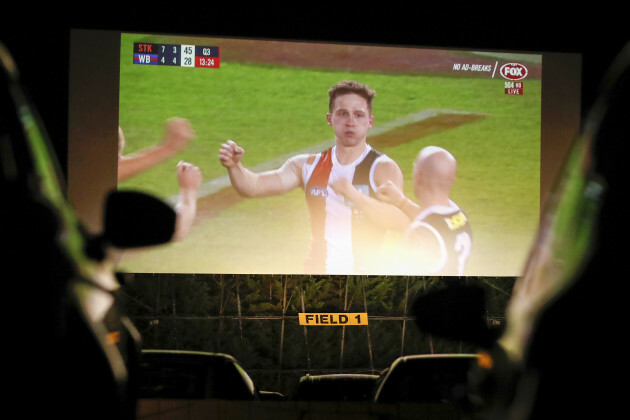PICTURE THE SCENE – Christmas time at Croke Park, the penalty shoot-out which will decide the 2020 All-Ireland football final has come down to the final kick.
Dublin’s Paul Mannion stands before Hill 16 – and it’s virtually empty. Save for the players, backroom teams, a handful of fans and selected media, Croke Park lies deserted. It’s certainly a strange thing to imagine yet this could be the reality in just a few short months.
Full stadiums remain a long way off. Organisations like the FAI, GAA and IRFU are looking at reduced capacity matches under current health guidelines but for now crowds of any significance have been told to stay away, a situation that presents a new set of challenges for clubs, stadiums and sporting organisations.
The most obvious issue with broadcasting a game played behind closed doors is the lack of an atmosphere. Football broadcasters have sought to address this issue with simulated ‘crowd noise’.
Sky Sports in Germany were the first to broadcast matches with this feature which is generated from EA Sport’s FIFA game. The canned atmosphere is not without opponents however, for example, Watford’s now ex-manager, Nigel Pearson recently comparing it to a sitcom laugh track.
Nevertheless, the response among supporters has been largely positive with the noise helping to make up for the lack of match atmosphere and normalising the viewer experience. Tactical cam features and the opportunity to ‘watch-along’ with casual pundit-led discussion as opposed to standard commentary have also been welcome innovations.
Will we see broadcasters in Ireland play audio of “Come on you boys in blue” as the Dubs march behind a socially distanced Artane band?
The visually jarring image of empty seats is perhaps a more difficult obstacle to overcome. Many returning football clubs have opted for giant tarpaulins spread out across empty seats with messages of unity, solidarity and hope. These large wraps have also created huge opportunity for sponsors with Nielsen Sports reporting that sponsors are getting added value to the tune of up to €600k from these new prominent positions in empty stadia.
Rather than simply cover the empty seats however, some stadia have opted to fill them. Cardboard cut outs of fans have been used successfully by clubs in the NRL as well as the Bundesliga and English Championship.
The process generally involves fans taking a photograph of themselves which is then placed in an empty seat as a cardboard cutout. Strict monitoring systems and checks need to be in place as demonstrated by events at Leeds United when an image of Osama Bin Laden found its way into the crowd at Elland Road while South Korean football club FC Seoul was fined in May for using sex dolls to fill empty seats.
Giant screens showing fans watching from home have also become a common sight at Premier League games. The fan screens give broadcasters the option of cutting to real fan reactions for goal celebrations and near misses. In further attempts to normalise the viewing experience, Serie A, La Liga and Major League Baseball have introduced ‘virtual fans’ for match coverage
Midtjylland FC in the Danish football league were early adapters to the reality of hosting matches behind closed doors. On 1 June, the club were back in action hosting a drive-in match viewing in the MCH Arena car park. 2,000 cars filed in to watch the match on giant screens and there was even a prize for ‘best dressed car’!
The drive-in viewing experience has been duplicated across sports and geographies, most notably on these shores when the RDS was opened up by Sky Sports for the Liverpool v Everton match viewing. 800 fans got to watch the fixture on Ireland’s largest LED screen while tuned into Sky Sports’ TV commentary through their car radio via a designated frequency.
Reports in the Telegraph recently reported that the RFU plan to prioritise corporate hospitality guests when welcoming the first fans back to Twickenham. Ahead of that introduction, organisations may seek to provide supporters with hospitality options through alternative methods. Extreme-E, the all-electric SUV off-road racing series, are looking to pioneer a new approach to hospitality – virtually.
They are planning to provide viewers with VR headsets, exclusive video, access to team radio channels, driver Q&As, and even a personal chef to cook for you at home. While the jury is out on this approach ahead of an imminent launch, it certainly is a novel way to bring fans closer to their sport or to entertain clients. Several major sports organisations are keeping close tabs on how the activity is received including Formula 1 and Golf’s USGA.
The priority among sporting organisations is to get back to action. With a focus on safety for players and staff, the thinking around how to compensate for empty stadiums was understandably short-term and limited.
A second wave of innovation is beginning to appear with exciting concepts to activate upon behind closed doors. Augmented Reality looks to be a rich area in which sponsors and rights-holders can play. A tifo (or mosaic) formed by fans holding up placards, can be the most visually impressive form of support you can find in a packed stadium (it’s worth looking at Borussia Dortmund’s spectacular efforts).
At a time when fans aren’t allowed in the stadium to choreograph such efforts, AR provides a safe platform for supporters to show their support. Technology can now facilitate a 360-degree, high resolution image of a stadium while implementing fan pics and messages of support, which can in turn, form a giant digital tifo.
While we all dream of a raucous atmosphere in a packed out Croke Park or Aviva Stadium, that reality is sadly a while away yet.
The way forward will be challenging and fraught with uncertainty. However, there are ways that clubs, sponsors and sporting bodies can bring the fans closer to the action.
While supporters are crying out for the unrivalled sense of atmosphere and drama experienced at live sporting events, the organisations that can make headway in bridging that gap should see a significant level of affinity build with supporters that will last beyond the return to normality.
Ross Murphy and Niall Leyden are communications experts with Teneo, a leading sport and sponsorship consultancy.
.



